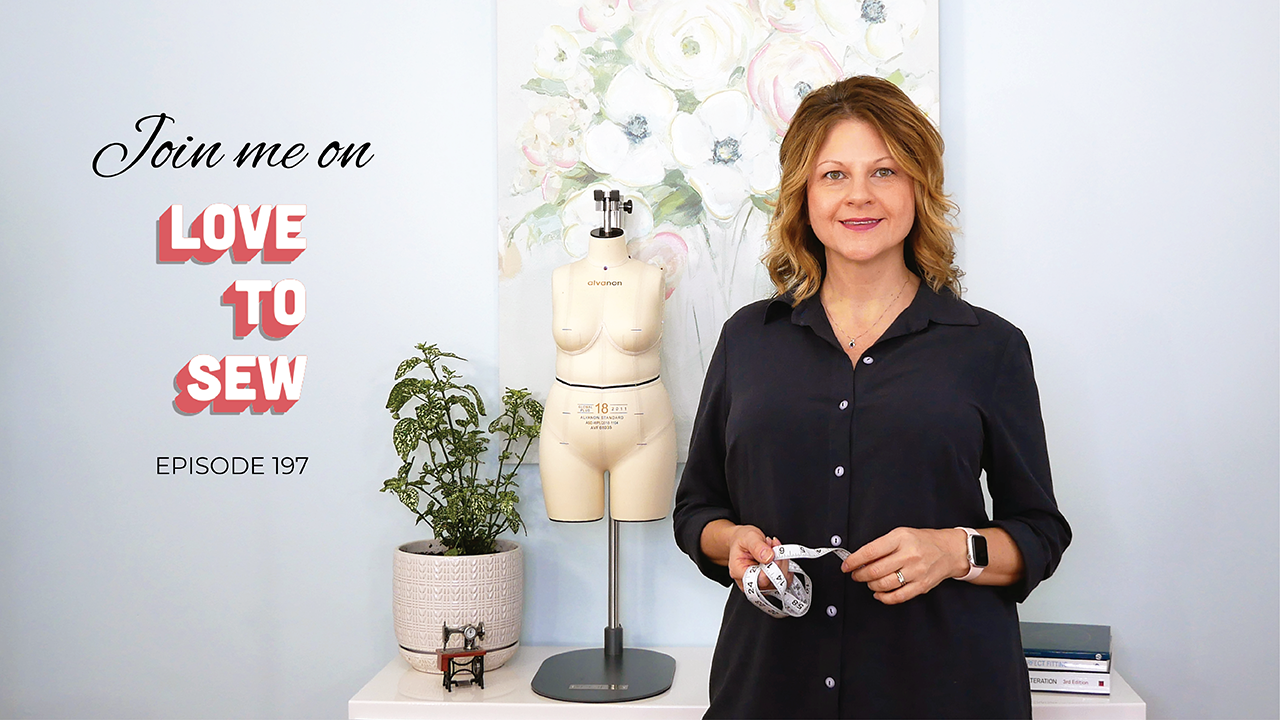Love to Sew: Episode 197 Fitting Advice with Alexandra Morgan

I was incredibly excited and grateful to be invited to be a guest on the Love to Sew podcast with Caroline and Helen.
They were both extremely gracious hosts and guided our conversation with ease and expertise in spite of my nervousness. Somehow we managed to cover topics that ranged from where I grew up to how I transitioned from the fashion industry to the home sewing world and still remarkably had time to offer fitting guidance to six lucky listeners who submitted their fitting photos for the show.
If you submitted a photo, you might be one of the lucky six, but even if you weren't chosen I have no doubt you'll learn a lot from this episode. We discussed fitting issues for 3 tops and 3 pants so you'll get a good overview of some of the more difficult to diagnose issues and some very unconventional ways of solving them.
The purpose of this post is not only to draw your attention to the episode but also to provide you with some additional resources that I talked about during the episode.
The Fitting Process
Watch this for an overview of the fitting process: Six Steps to Fitting Success
If you are receiving my emails you already have a copy of The Perfect Fit Guide but just in case you don't have it you can get your copy HERE. Sign up for the guide before you listen so that you can follow along as we discuss the fitting process. You'll find it's like a mini-workbook and includes a Pattern Measurement Worksheet that you can use to record your body and pattern measurements. You'll find the worksheet on the very last page of the document.
If the concept of balance lines is new to you, the Lila sewing pattern will give you a great introduction to how useful they can be. This pattern is a mini course in the fitting process and includes access to an In-House Patterns Studio Library account which houses the PDF pattern files, instruction booklet and video tutorials to help you with fitting and constructing the garment. I've also included a few pattern design tutorials that will give you even more variations to the style.
Fitting Order
I am often asked in what order you should make your fitting adjustments and my answer is always the same: When fitting tops dresses or jackets start at the top and move down. This is because these types of garments are held by the neck and shoulders. When fitting pants make length adjustments from the bottom up and girth adjustments from the top down. This is because pants are held by the crotch level which is measured from the floor.
Solve for length first, contour second, width third and girth last. Girth comes last because it is assumed that you have chosen the correct size to begin with.
Length adjustments solve for your figure proportion. They put the darts and shaping in the garment at the correct level for your body so that they address the the shape of your body. These adjustments are usually made equally to the front and back of the garment. (example: raising or lowering a waist seam)
Contour adjustments solve for the prominence of your curvy parts and always involve dart shaping. These can be visible darts or the invisible darts that you find in seams. Contour adjustments change the width and length of the pattern and increase or decrease dart volume. (example: cup size adjustment)
Width Adjustments solve for the width of the body on either the front or back patterns. They align the pattern to your bone structure. (example: shoulder width, across front, across back)
Girth adjustments solve for circumference issues. These adjustments are usually made equally to the front and back of the garment-usually at the side seams. (example: increasing waist girth or hip girth)
I cover this, and more, in detail in the Fitting Essentials online course which will be opening for enrollment again on January 18th, 2022. Enrollment is only open once per year so sign up for the waiting list if you are interested in this course.
Another very important concept I wanted to share was that when fitting you need to think in terms of negative space and measurement distribution.
Negative Space is the space inside the garment that your body occupies. In order for any garment to fit this negative space must match the shape of the body.
Measurement Distribution is a segmenting of a linear measurement to specific areas of the body. Measurement distribution is the key to designing the correct negative space for the body.
I hope you enjoy listening to the Love to Sew episode as much as I enjoyed being a guest. I can't wait to hear what you thought of it. To share your thoughts join in the conversation in the private In-House Patterns Studio Facebook group or send me an email.
All My Best,
Alexandra
[I have removed commenting from this website to reduce the number of ads you are subjected to. If you would like to support the free content I share, all of my video tutorials are available to comment on and watch on YouTube. These videos contain ads which generate a small share ad revenue if you allow the ads to run.Your support is greatly appreciated.]
GET A COPY OF THE PERFECT FIT GUIDE
Discover the Six Essential Steps to Getting the Right Fit
We hate SPAM. You can unsubscribe at any time.

